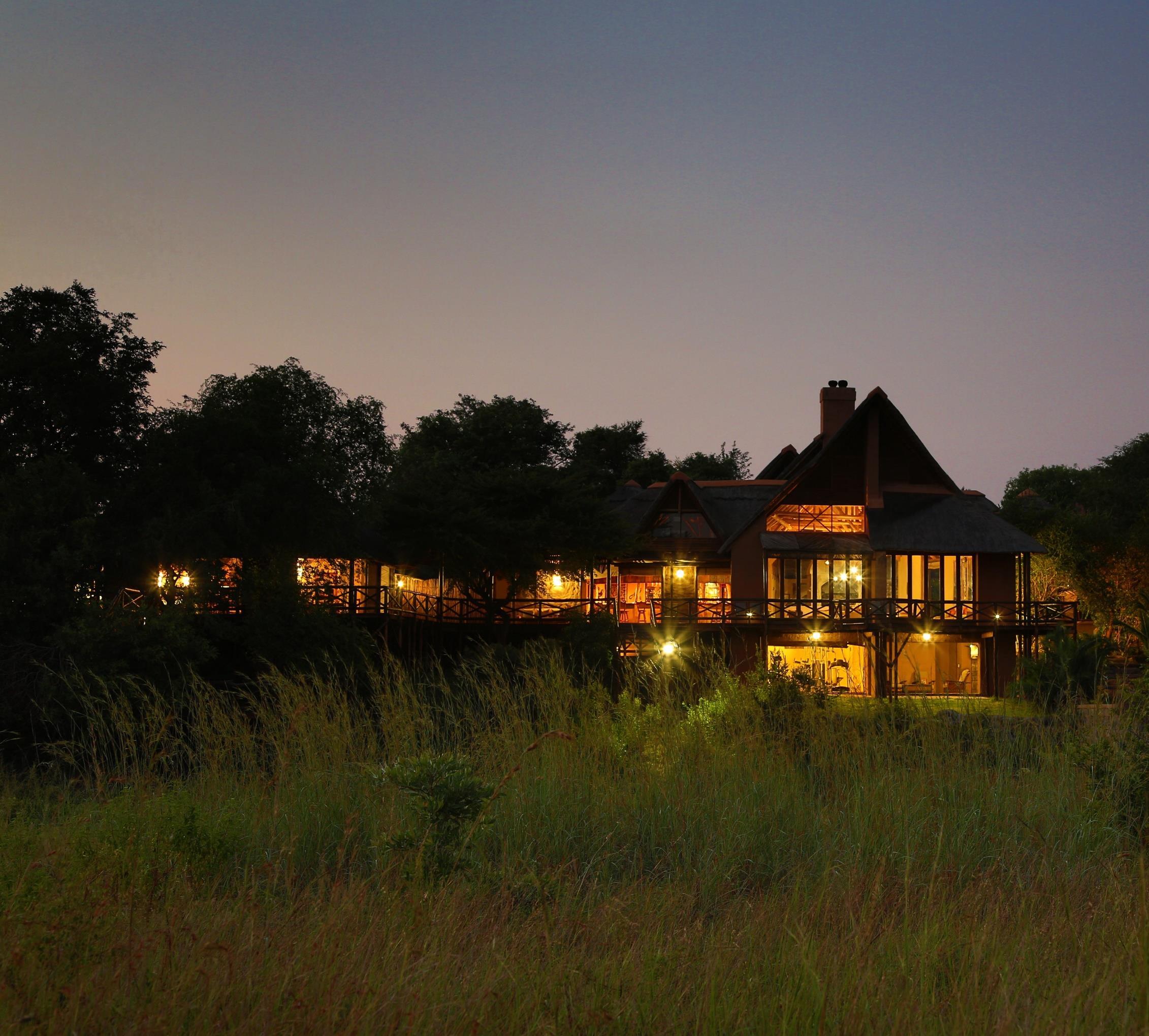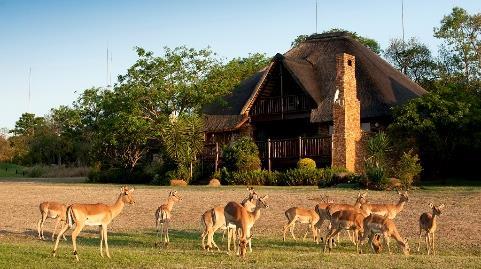
7 minute read
EASTERN CAPE The Garden Route
outh Africa's Garden Route region is a world class tourist destination, and together with the Little Karoo it offers a diverse range of exciting and unique experiences, where visitors from abroad and locals are sure to find the perfect balance for a magical holiday.
Straddling the beautiful stretches of coastlines of the Western and Eastern Cape provinces of South Africa, the 200km long stretch of Garden Route derives its name from the stunning natural beauty and unique, ecologically diverse vegetation that typify the region, including grasslands, wetlands, forests and mountainous regions, and the numerous lagoons, lakes and rivers that dot the coastline.
Advertisement
Under the abundant blue skies rolling white sandy beaches beckon. Soak in the dramatic mountain scenery, indigenous fynbos, and animal attractions of the area on foot or bike, by vehicle or from the air. The Garden Route spans South Africa's Western Cape coastal belt from Heidelberg in the Western Cape to the Storms River in the Eastern Cape and provides a stirring study in contrasts. There are more than 21 towns along the Garden Route, offering an endless list of attractions for single travellers, families, couples and tour groups. S
Knysna
The charming town of Knysna offers accommodation in a veritable paradise of lush indigenous forests, tranquil lakes, and golden beaches, showcasing the natural loveliness of South Africa. Nestling on the banks of a breathtakingly pretty lagoon, Knysna is now a protected marine reserve that is home to the extraordinary Knysna seahorse and over 200 species of fish.
Beaches, lakes, mountains and rivers provide endless opportunity for leisure and outdoor adventure. Within the town, craft shops, fleamarkets and cosy cafés beckon with small-town charm and hospitality. The area around Knysna is a veritable Garden of Eden. This is home of the only forest elephant in South Africa, the rare Pansy Shell, the brilliantly coloured, and elusive, Knysna Loerie, a plethora of waterfowl and forest birds, dolphins and visiting whales.
The forests in Knysna constitute the largest complex of closedcanopy forest in southern Africa, whilst the remarkable richness of the Fynbos vegetation contributes over 8,000 plant species to the Cape floral kingdom. Exploring the Knysna forests, along demarcated walks, provides a complete escape into a former time when many elephants trod these paths,
particularly if you’ve read Dalene Matthee’s ‘Circles in a forest’.
Today a mere three elephants are reputed to still roam the forest. The Knysna Elephant Park has brought the elephant back to Knysna and all the elephants are former orphans rescued from culling operations in the Kruger National Park, except for Thandi who was born in the park.
A visit to Knysna would be incomplete without a trip to the heads –a striking geological feature made up of a pair of huge, brightly coloured cliffs lying at the mouth of the lagoon, flanking a channel of potentially treacherous water that flows into Knysna’s lagoon.The eastern head houses a lookout with spectacular views of the lagoon, Leisure Isle and Knysna whilst the western head is a privately owned nature reserve called Featherbed Nature Reserve. Visitors can get to the reserve via ferry.
Mossel Bay
Halfway between Cape Town and Port Elizabeth in the heart of the famous Garden Route nestles the seaside town of Mossel Bay. A bustling holiday resort in summer and the ideal retreat in winter, Mossel Bay Garden Route is situated on a spectacular sun washed peninsula embraced by the warm Indian Ocean.

Mossel Bay is a gentle seaside town, one where you will really relax and quickly slip into our “No Hurries, No Worries” frame of mind.
Mossel Bay offers the full spectrum of accommodation establishments and you'll find a welcoming place to stay no matter what your budget.
Camp sites and caravan parks, inexpensive B&Bs and top-end lodges and hotels are spread out around the town –so nobody is excluded. And, what's more, you'll find beach-front accommodation across the spectrum –whether you're into rough-and-ready camping or sophisticated upmarket pads equipped with all the modern conveniences.


Herolds Bay
The beautiful, secluded bay of Herold’s Bay has held an allure for holiday makers since time of old. Sketches and photographs in the George museum tell of ox wagons filled with tents, goods and servants, camping out on the beach itself.
Today the bay is no less of an attraction and surfing, fishing and swimming, sheltered from the south easterlies that can blow on the coast, make this a favourite destination. Only 15 kilometres from George, the bay literally nestles in a sheltered rocky cove

with a wide stretch of beach and inviting waters.
The little village of Herold’s Bay has short of 100 homes, making it something of a hamlet in much the same way that Llandudno in Cape Town has managed to retain its village appeal. If you’re after bright lights and the clatter of the city, then Herold’s Bay isn’t the holiday for you. But for those after a complete break and the chance to unwind, Herold’s Bay will not disappoint.
There are a serious number of activities one can do from here. The Oubaai golf course, the first Ernie Els signature golf course in the country - is an 18-hole course built around the natural landscape between the Gwaing River Valley and the Indian Ocean.
The beautiful coastal fynbos in and around Herold’s Bay makes for some wonderful walks and trails, a fantastic area for spotting birds, and when the time is right, dolphins and whales. outdoors, situated on the stunning coastline between George and Knysna.
Nestling between pine covered hills and beautiful unspoiled beaches, in the heart of the Lakes district and the South African Garden Route.
This picturesque resort is a nature lover's paradise, offering the visitor a rich and varied birdlife, including marine, estuarine and evergreen forest species which can be viewed along many hiking trails and bird hides.
Nature has blessed this area with a pleasant temperate climate, moderate rainfall throughout the year, conducive to an abundance of natural forests, fynbos and a variety of wildflowers. A birdwatcher’s delight with over 250 listed species.
The lakes in the area form a continuous water plateau, separated from the Indian Ocean by a narrow dune-like strip of land. On the western side of the village lies Swartvlei, by far the largest of the lakes in the district with the estuary forming a safe bathing area for young and old. Gerickes Point on Swartvlei beach, with its

beautiful rock formations and pools, is also ideal for snorkeling and spear fishing. There are a number of paragliding sites with magnificent views over the town, lakes and sea.
The estuary and endless beaches offer the bather and fisherman days of lazy sunbathing and fishing off the beach or estuary, as well as spearfishing off Gerickes Point, where interesting rock formations will delight the beachcomber who might even come across relics of prehistoric strandlopers.
Plettenberg Bay
Plettenberg Bay is commonly regarded as the jewel of South Africa's Garden Route region. It's more than a village, less than a town. Plettenberg Bay is tranquil and charming, hospitable and rather special.
Originally and rightly christened “Bahia Formosa” (beautiful bay) by early Portuguese explorers Plettenberg Bay, or simply Plett to the locals, can be accessed by first class national roads, by sea or by scheduled air flights.

Plettenberg Bay is characterised by sweeping, unspoilt golden beaches, a dramatic rocky peninsula, intriguing lagoons and estuaries, lush indigenous forest and unpolluted rivers and sea. With its exceptional climate, breathtaking scenery and beautiful views over the Indian Ocean, Plettenberg Bay is perfect for tourists interested in exploring, watching or just lazing.
Plettenberg Bay is home to the rare Knysna forest elephant, teaming wildlife, vast expanses of Cape flora, delicate ecosystems in wetlands and lagoons, gigantic trees, and a bay large enough for the great whales of the Southern Ocean to calve in and protect their young.
An hour’s scenic drive from George Airport and two hours from Port Elizabeth Airport, Plettenberg Bay and environs stretches from Harkerville through to Nature’s Valley and Storms River, some 80km along the N2 national road that connects Cape Town in the Western Cape to Port Elizabeth in the Eastern Cape.













